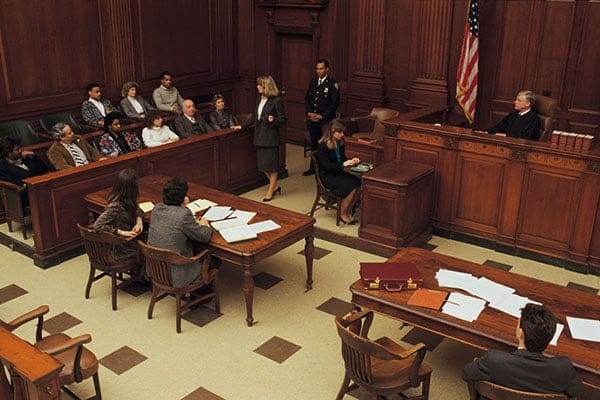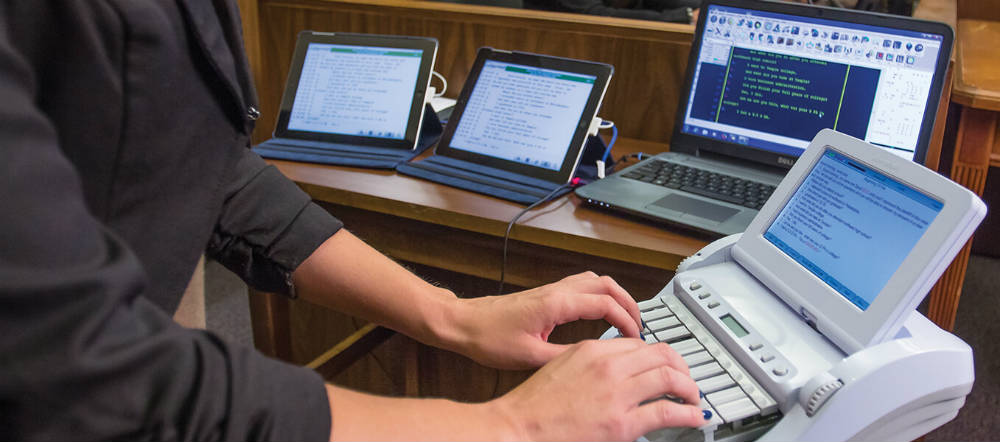How to choose durham court reporting professionals
How Court Reporting Works: A Step-by-Step Guide to the Lawful Process
Court reporting is a crucial part of the lawful system. It includes a structured process that guarantees accurate documents of process. From prep work to the final delivery of transcripts, each action is necessary. Comprehending exactly how stenotype reporter operate deals insight into the honesty of lawful records. The nuances of their job can exceptionally impact lawful results, triggering questions concerning the techniques and technologies they utilize. What are the specific strategies that define this career?
The Function of Court Reporters in the Legal System
Stenotype reporter play an essential duty in the legal system by giving precise and dependable transcripts of court process. Their work warranties that every spoken word throughout trials, hearings, and depositions is recorded, which is essential for keeping an official record of events. This transcription is fundamental for appeals, as it enables greater courts to review the process and establish if any kind of errors were made throughout the trial.
Additionally, stenotype reporter aid in preserving the integrity of the legal procedure by producing verbatim records that can be described by lawyers, courts, and various other parties associated with a case. They frequently use customized equipment and software application to record dialogue with precision. Beyond the court room, their records can serve as essential historic records, offering insight into judicial procedures and the lawful system's performance. Inevitably, court reporters contribute significantly to transparency and responsibility in lawful issues.
Planning for a Court Reporting Session
Prep work is essential for a successful court reporting session, as it guarantees the accuracy and efficiency of the transcription process. Stenotype reporter begin by evaluating situation materials, including pleadings and witness lists, to familiarize themselves with the terminology and context. They also make sure that they have the necessary tools, such as steno machines, note pads, and back-up tools, on-line.
Prior to the session, communication with legal teams is essential. Press reporters usually make clear any type of certain requests concerning formatting or favored terms. Furthermore, they may prepare to meet witnesses or attorneys to discuss the process and validate the routine. Arriving early to establish the devices permits repairing prospective technical concerns. Generally, complete preparation not just improves the reporter's self-confidence but additionally adds greatly to producing a clear and accurate record of the lawful process.

Recording the Record: Strategies and Devices
Using innovative methods and reputable devices, court press reporters meticulously record the talked word during legal proceedings. They employ stenography, a technique entailing a specialized device that enables them to type several noises concurrently, therefore transcribing discussion in actual time. This equipment, known as a steno keyboard, is geared up with secrets that stand for words and syllables, making it possible for swift and exact input.
In addition to stenography, court reporters may utilize audio recording gadgets as additional devices. These tools offer as back-ups, ensuring that no crucial info is lost during proceedings. Some reporters incorporate software program that boosts their transcription effectiveness, using functions such as voice recognition and automated format.
Correct positioning and focus are critical; reporters have to preserve attention on all audio speakers, recording nuances and inflections that add to the document. With a combination of ability and innovation, stenotype reporter copyright the honesty of the legal procedure by making sure a complete and accurate record of occasions.
Recording the Proceedings
Recording the proceedings calls for court reporters to transform spoken discussion into created text with exceptional precision and rate. This process typically happens instantly after the recording has actually been captured, making use of specialized software that permits smooth transcription. Court reporters have to listen diligently to the sound, guaranteeing that every inflection, word, and time out is precisely stood for in the transcript.
They frequently count on shorthand systems, individual transcription abilities, and advanced innovation to facilitate this task. The atmosphere in which they function can be occasionally disorderly and fast-paced, as lawful proceedings commonly entail numerous speakers and technological lingo. Court reporters have to likewise preserve concentration read the article to record subtleties in tone and context that might be vital for the lawful document. Ultimately, the accuracy of the transcription is crucial, as it works as an official document for future referral in legal procedures.
Reviewing and Editing the Records
The procedure of reviewing and editing and enhancing the transcript is important for guaranteeing accuracy in court reporting. Stenotype reporter usually team up with attorneys to make clear any kind of ambiguities and verify the correctness of the videotaped declarations. This collaboration is important for preserving the honesty of the lawful record.
Importance of Precision
Accuracy functions as the cornerstone of efficient court reporting, as even minor errors can significantly alter the significance of legal process. The examining and editing procedure is critical in guaranteeing that transcripts mirror the spoken word with integrity. Stenotype reporter meticulously confirm names, technical terms, and legal jargon to maintain precision. This interest to detail helps avoid misunderstandings that might influence instance end results. Additionally, accuracy fosters trust fund amongst attorneys, customers, and the court, enhancing the honesty of the judicial system. Mistakes can result in charms or disagreements, making it crucial for reporters to fine-tune their job thoroughly. Ultimately, the quest of precision not just improves the reliability of the transcript but additionally upholds the standards of the legal career.
Partnership With Lawyers
Partnership in between stenotype reporter and attorneys is important during the assessing and editing and enhancing phase of transcript manufacturing. This process assures that the last document accurately shows the talked word and sticks to legal criteria. Attorneys often evaluate records for specific terminology, context, and any type of possible mistakes that could impact the situation. Stenotype reporter depend on attorneys' experience to clarify ambiguous sections or highlight vital declarations. Reliable interaction is vital; lawyers might give responses or request adjustments, which stenotype reporter must attend to immediately. This collaboration not just boosts the top quality of the transcript however also contributes to a smoother lawful process. Eventually, collaborative efforts lead to a reliable and precise record, essential for lawful proceedings and future referrals.
Delivering the Last Transcript to Clients
Upon conclusion of the transcription process, court press reporters meticulously prepare the last document for shipment to their clients. This final transcript undertakes thorough checking to ensure precision, as any type of errors might significantly affect lawful process. Stenotype reporter layout the record according to the details requirements stated by the clients or lawful companies, including pagination, indexing, and any type of essential exhibits.

Court reporters may provide a cover letter summarizing essential details and providing additional support if needed. This detailed strategy warranties that customers obtain a sleek, specific, and conveniently accessible records, crucial for their lawful requirements.
Often Asked Concerns
What Certifications Are Required to End Up Being a Court Reporter?
To become a stenotype reporter, people commonly require a senior high school diploma, completion of a court reporting program, and accreditation or licensure, depending on state needs. durham court reporting. Effectiveness in shorthand and innovation is also important for success
How Lengthy Does It Take to Complete Court Reporting Training?
Commonly, finishing court reporting training takes between 18 months to 4 years, depending upon the program's intensity, the pupil's speed, and the specific needs of the territory in which they wish to exercise.

What Is the Typical Wage of a Court Reporter?
The ordinary income of a court press reporter varies by area and experience, usually varying from $45,000 to $100,000 yearly (durham court reporting). Factors such as expertise Related Site and demand can considerably influence their incomes in various regions
Are Court Reporters Required to Have Qualification?
Stenotype reporter are normally required to acquire qualification, which guarantees they have the Discover More Here necessary abilities and expertise for accurate transcription. Qualification requirements can differ by state or territory, reflecting expert standards within the legal area.
Can Court Reporters Work Remotely or Freelance?
Stenotype reporter can function remotely or freelance, supplying adaptability in their profession. Numerous make use of innovation to record process from various places, enabling varied opportunities in the legal field while preserving a work-life equilibrium.
Court press reporters play an essential role in the legal system by offering trusted and accurate transcripts of court proceedings. Furthermore, court press reporters help in maintaining the stability of the lawful procedure by developing verbatim records that can be referred to by lawyers, judges, and other celebrations included in a situation. Utilizing advanced techniques and dependable equipment, court reporters meticulously record the talked word throughout legal procedures. Court press reporters must likewise keep focus to record subtleties in tone and context that may be vital for the legal record. To become a court reporter, people commonly need a high school diploma, conclusion of a court reporting program, and accreditation or licensure, depending on state requirements.